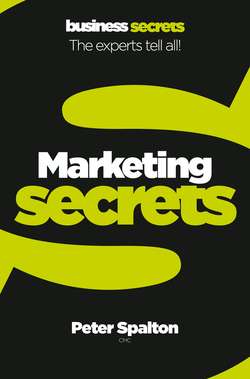Читать книгу Marketing - Peter Spalton - Страница 12
2.2 Define your ideal customer
ОглавлениеThe work that you do to define your potential customer is probably the most valuable time you spend in marketing. Traditional marketing people call this segmentation, and they will put a lot of time and energy into getting it right.
Let’s assume that you have an idea for a product and need to decide who it’s aimed at. The best way to do this is to have a meeting with two or three people who know the product and the type of customers you’re interested in, then take these four simple steps.
1 Start with demographics. If you are selling to consumers, this is their age, gender, income bracket and geographic location. If you sell to businesses, it’s their size, industry and the region or country in which they are based.
case study In the 1950s, Parker turned the pen business on its head when it decided that its ideal customer was someone looking for a gift. Parker Pens put more money into the packaging, so their products became presents. These days, we have specific pens for pre-school children, school children, students, office workers and professionals. And nobody actually buys a pen for themselves.
2 Look at buying habits. Will customers be heavy users and buy your products and services every day, week or month? Or will they buy only once every few years? For example, office workers in the city may buy coffee from the same place every day, whereas, at the other extreme, people tend to buy a car only every few years and a house just three or four times in their life.
3 Consider who will purchase the product. And how they will pay for it. For example, baby clothes are for babies but they’re bought by parents, grandparents and friends. Will people pay for your product with cash or credit card? Or, in the case of a very expensive item, will they need a bank loan? If so, you might like to approach a bank so that you can arrange loans on behalf of your customers. That would be a great added-value service.
4 Think about the motives for buying your products. Is it a lifestyle purchase, where customers buy to feel good or improve their status in their community? Or will they buy to solve a problem, save time or reduce costs? And think about whether they will make a decision based on quality, service or price.
When you have finished, you should have a picture of your ideal customer. Then you need to consider how they might find out about you, where they would buy your products and the size of the market.
The time you spend on clearly defining your ideal customer is never wasted.
